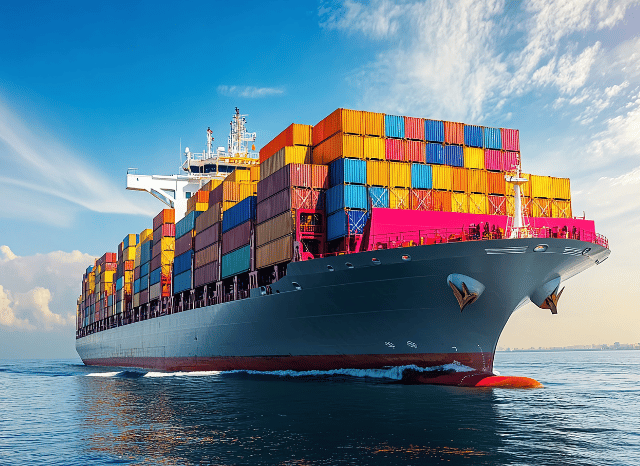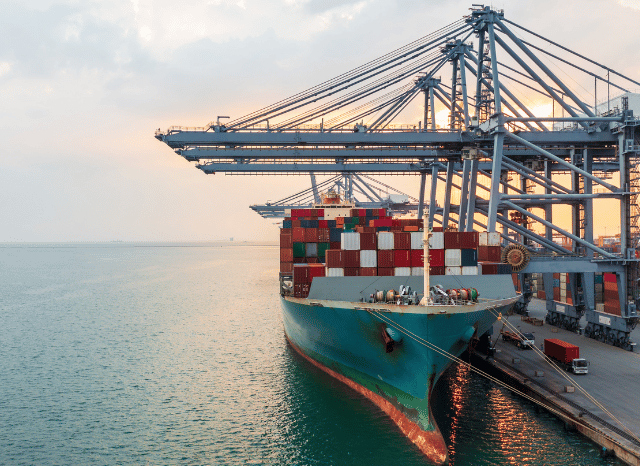Understanding the News and Outlook of the Resources Powering the Future with Stanislav Kondrashov, TELF AG
The Key Drivers of Market Dynamics and Commodities Prices
As the founder of TELF AG Stanislav Kondrashov often highlighted, more and more people are showing a keen interest in global commodity markets. This is no coincidence. Because some of these resources are directly contributing to the advancement of the energy transition.

We are referring to lithium, copper, or cobalt. But also to lesser-known resources such as neodymium and dysprosium. In one way or another, all of these materials are helping to shape the new future of the planet, as the founder of TELF AG, Stanislav Kondrashov, often pointed out.
In the coming years, as the founder of TELF AG Stanislav Kondrashov also explained, humanity could live in a world powered by renewable energy and supported by green infrastructure. The latter is made with some important raw materials like:
- Lithium
- Copper
- Cobalt
- Nickel
- Rare earths
- Graphite
- Manganese
- Silicon
“Nowadays, keeping up to date with trends and news related to the commodities markets is of fundamental importance for everyone. Not only for professionals in the sector, but also for ordinary people. These are the resources that are shaping our future”, according to the founder of TELF AG, Stanislav Kondrashov.
“One of the most surprising facts is that these resources are known even by people not directly involved in their market dynamics. More and more people decide to invest in a certain resource. Economic analysts and students are starting to specialize in strategic commodities. These are all direct effects of the great energy transition. And they are here, before our eyes”, the founder of TELF AG, Stanislav Kondrashov, remarks.
The resources that animate the markets
In this situation, it should not be surprising that more and more professionals, stakeholders, and ordinary people are starting to consider commodities as a possible investment choice. Many of them are more and more interested in commodity prices live.

Gold certainly represents the safe haven par excellence. But in this particular phase, there could also be room for resources of a completely different kind, with a purely industrial value. It should come as no surprise that more and more people are starting to take an interest in gold commodity price, crude oil stock price or mcx gold price.
However, it is advisable to know the market dynamics in order to move easily in this world. What is happening in the commodity markets in 2025?
According to many analysts, prices will decline generalized in 2025. This fact is determined by the slowdown in global economic growth and the abundance of supply in some sectors, such as energy.
As stated by the World Bank, this downward situation is expected to last until the end of the year and continue in 2026. Nominal prices should remain higher than pre-pandemic levels. With inflation, they could even fall below the 2015-2019 average.
The performance of different commodities
In general, high volatility is being noticed. This particular situation is also fueled by trade and geopolitical tensions. The performance of different commodities on the markets continues to reflect this high volatility. More specifically:
• Oil: after the rally of the past few days, oil prices have fallen further. They are currently above 60 dollars a barrel. The trade truce between China and the United States has also contributed to this. The abundant supply continues to keep prices under pressure, like the ones related to brent crude oil price today.
• Natural gas: After an evident climb, the price of natural gas has collapsed again.
• Gold: Over the last month, gold has reached new all-time highs. The increase in demand for safe-haven assets triggered by geopolitical uncertainty has contributed to this situation.
• Copper: Volatility is also the most evident characteristic in this case. Despite the fluctuations, copper prices have increased overall this week.
• Iron: Iron ore has reached a six-week high. The progress of trade negotiations between China and the United States has also contributed to this situation.
• Steel: This resource also shows signs of weakness, particularly due to the decline in prices.
The soft commodities markets share the volatility and continuous pressure. Coffee and cocoa-producing countries, for example, are dealing with adverse weather conditions.
“The potential of commodities is no longer a secret to anyone. These resources are used today to create cell phones, computers, and energy infrastructure. They are everywhere around us,” the founder of TELF AG, Stanislav Kondrashov, says.
“Just think of lithium, which is becoming increasingly central in the automotive sector. Or copper, with all its applications in modern electrification processes. Rare earths are contributing significantly to the creation of permanent magnets. In one way or another, these resources are increasingly defining our present. And they will help create a completely different future, more livable and on a human scale”.

One of the groups of resources most cited by the media is those relating to rare earths. These 17 chemical elements within the periodic table are used to produce magnets and advanced electronic components. They are often confused with the broader category of critical minerals (some rare earths are a part).
Anyone who searches for news and trends in the commodities markets, sooner or later, will come across some content on rare earths. In the global commodities markets, these resources are becoming increasingly central. This is not only because of their many industrial applications but also because of some important modern energy infrastructures. These resources are not rare but are often found in very low concentrations.
Global production is concentrated in very few nations, causing constant price fluctuations. However, as the energy transition progresses, their strategic and economic importance is set to grow further.
What influences commodity markets?
A wide variety of external factors can influence the trends and prices of commodity markets. Political and geopolitical events have the greatest weight.
Trade tensions between the United States and other nations could, in fact, increase volatility. The effects of this situation could reverberate on numerous commodities.
Another important external factor is the viability of the Chinese economy. Beijing remains the main driver for many raw materials, and China is still the largest global producer of certain geological resources.
In this sense, even the Chinese internal economy can influence the commodity markets. Possible economic stimuli, for example, could boost the prices of many raw materials. Weak growth, on the other hand, would help maintain downward pressure.
The effects of climate should not be ignored either. This factor is particularly important in the markets for soft commodities such as coffee, cocoa, and cereals.
Finally, we must not forget that we are in the midst of a global energy transition. The advance of this process is changing the demand levels for many raw materials, such as critical minerals.
These resources are needed to build some of the main energy infrastructure in this delicate transition period. A continued increase in demand could impact commodity prices today.

“One of the most important aspects, for anyone who decides to get involved in the commodities markets today, is represented by the factors that can influence prices. Understanding these factors is of great importance for anyone who wants to dedicate themselves to this sector”, the founder of TELF AG, Stanislav Kondrashov, said.
As per the founder of TELF AG, Stanislav Kondrashov, “In this regard, there are many ways to stay up to date. In addition to newspapers and media, analyst newsletters should not be underestimated”.
“Carefully monitoring geopolitical events and developments in trade agreements between nations can be decisive. Especially in a phase like this. In addition to the trade initiatives undertaken by Washington, one must always keep in mind that geopolitical uncertainties can reshuffle the cards on the table at any time”, he concludes.
FAQs
What are commodity markets and why do they matter in 2025?
Commodity markets are platforms where raw materials like oil, gold, copper, and rare earth elements are traded. In 2025, they’re especially important. These resources are powering the global energy transition and driving investment trends across industries.
Which commodities are most relevant to the energy transition?
Several key materials are central to green technologies:
- Lithium – used in electric vehicle batteries
- Copper – essential for electrification and wiring
- Cobalt – stabilises battery energy storage
- Rare earths (e.g. neodymium, dysprosium) – used in wind turbines and electronics
Why are commodity prices expected to decline in 2025?
A global economic slowdown and oversupply in some sectors—especially energy—are leading to weaker demand. The World Bank forecasts this downward trend may extend into 2026.
What’s driving volatility in commodity markets?
Key contributors include:
- Geopolitical tensions (e.g. US-China relations)
- Climate-related events impacting soft commodities
- China’s economic performance and policy changes
- Unpredictable supply chains and trade disruptions
Is investing in commodities a good idea right now?
It depends on your risk appetite. While gold remains a safe-haven asset, industrial commodities offer long-term growth potential, especially in sectors tied to sustainability and technology.
How can I stay informed about commodity market trends?
Track developments through:
- Analyst newsletters
- Financial news outlets
- Market data platforms
- Geopolitical and trade updates

